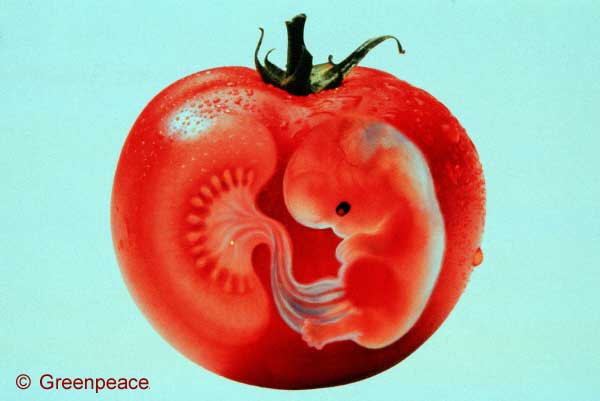“Immortality”
is this possible? Yes it is definitely possible in the near future. But how can
humans to be immortal and what could be the reason for the death. It is an
interesting argument. To give a small shock to your brain about the reason this
is an open invitation to read the whole article in one breath.
Transgenesis. In this area, we are going to give our attention to genetically modified organisms and other
related things.
Ok. Let’s go to the basic concepts.
Do you know that every human being, every animal, every plant and also every
living organism are built from one basic building block. What is that? It is called
a “cell”.
When talking about the microorganisms like bacteria, fungi, and algae commonly they consist of one cell or few cells. Cells are very small structures that are not visible under the naked eye. That is why these microorganisms are invisible to us. So we use microscopes to visualize these organisms. Light microscope is the best example for this.
Humans and other large scale animals are also
made from large amount of these cells. But structure When talking about the microorganisms like bacteria, fungi, and algae commonly they consist of one cell or few cells. Cells are very small structures that are not visible under the naked eye. That is why these microorganisms are invisible to us. So we use microscopes to visualize these organisms. Light microscope is the best example for this.
and functionalities may
little bit different from microorganisms. It is believed that all these living
organisms
evaluated from one common ancestor. (evolution.berkeley.edu, 2012) All
these organisms hold the key
features in their bodies and transfer these
features to next generation. Okay let’s go the larger scale. Think
about
humans. They all have minimum
These
DNA makes very long bundle in the inside of the cell. DNA code can be written
in an infinite number of patterns. DNA made from combine of three main parts.
Those are known as nitrogenous base part, deoxyribose sugar part and phosphate
group part. DNA has four nitrogenous bases.
Those are adenine, thymine, guanine and cytosine. Changing the place of these bases in the DNA chain can produce infinite number of DNA chains which are different from one to another. A small area in every DNA chain causes to affect a special function of an organism known as a “GENE”. Large amount of genes coded in to one DNA molecule and controls every function of an organism. (Hyde, 2009).
Those are adenine, thymine, guanine and cytosine. Changing the place of these bases in the DNA chain can produce infinite number of DNA chains which are different from one to another. A small area in every DNA chain causes to affect a special function of an organism known as a “GENE”. Large amount of genes coded in to one DNA molecule and controls every function of an organism. (Hyde, 2009).
At least one base change from its natural
place is known as “gene mutation”. The reason for the bio diversity of the
world is these DNA mutations happen through a very long period. This is a natural process. But nowadays
scientists have done these in the laboratories. They change the gene code of
one organisms and input new gene code from another organism.
www.highschoolbiology.otago.ac.nz
states that “transgenesis is the process of inserting a gene from one source
into a living organism that would not normally contain it”.
So using special techniques scientist can change the natural gene sequence of an organism with gene sequence of another organism and produce special new characters in the subject organism.
So using special techniques scientist can change the natural gene sequence of an organism with gene sequence of another organism and produce special new characters in the subject organism.
Can
you think about what can be done from this new technology? Yes of course it can create new life forms
and modify existing life forms. A new word came to us, which is “Genetically Modified
Organisms or GMOs”. I would believe that you know about the spider man or
superman or Xmen? From this technology
we can create these kinds of modified humans or GMOs. We can extract spider
genes from a spider and input them in to a human andwe may be able to create a
spider man. Do you here about the latest film called “In time”. That is one of the
best examples for a story about the genetically modified humans and the future
world. In that film all living humans created by genetically modifications and
all of them are immortals. But immortality makes a catastrophic effect on
humans and all of them try to live many years and begin to fight for life.
So
likewise transgenesis holds enormous contribution to the modern society and
also it contains some ethical issues. First let’s talk about what are the
advantages of the transgenesis and genetically modified organisms.
Transgenesis
allows scientists to develop organisms that express a novel trait or
characteristic not normally found in that organism. For an example a type of
rice known as golden rice has increased the level of Vitamin A (an essential
nutrient for human growth) (Glen, 2010). Scientists are producing many types of
transgenic animals. Such as Transgenic Disease Models, Transpharmers,
Xenotransplanters, Transgenic food sources (Bazinet, 2005).
Transgenic
disease models are animals made from genetically modification to exhibit human
diseases. These animals help to study about initiations and spreading of
diseases and help to find cures (Bazinet, 2005).
Transpharmers
are animals that can produce pharmaceutical compounds in either in their milk,
eggs, or blood. Few years ago many animals killed to get essential chemicals
required for medical needs such as Hormones like Insulin. But with this new
technology these chemicals can be gathered from milk or eggs without killing
the animals (Bazinet, 2005).
Xenotransplantation
is the method where an animal organ transplanted into a human body. For an example we can take rats with human
organs. See the picture (Bazinet,
2005).
Transgenic
food sources are genetically modified animals to better accommodate the needs
of human consumption. Such as super fish that grows larger than a normal fish (Bazinet,
2005).
Not
only animals but also there are genetically modified plants and microorganisms.
Some GM plants hold the potential of producing human vaccines. These plants are
edible and supply vaccines easily to human body without injecting by a needle.
Nowadays scientists can produce a plant with a vaccine for a disease known as
non- Hodgkin’s Lymphoma. As mentioned earlier if we can produce a plant with
Insulin hormone definitely that will change the world (Glen, 2010).
There
are various kinds of GM plant’s to accommodate the needs of human consumption.
Such as high harvesting plants which need law amount of nutrients and
fertilizers, more resistance plants for insects, environment and diseases, long
lasting vegetables & Fruits etc..(Peña, 2005).
And
also transgenic microbes (bacteria and fungi) have many commercial and
practical applications, including the production of mammalian products. Most successful
commercial enterprises use transgenic bacteria to produce human proteins which are
essential for humans to maintain their day to day life. Another promising
application of these microbes is environmental
cleanup, or known as “bioremediation” (bookrags.com, 2012)
Now
we know the advantages of these genetically modified organisms or transgenic
organisms. Then we should discuss about the ethical issues behind this new
technology. The most commonly cited argument can be referred to as playing god
problem (Taupitz, 2009). We don’t know how life began and also we don’t know
exactly how cells of organisms functioning. Then we can create new life forms
and modify existing life forms without knowing it. And also we are disturbing the
line between two species (Glenn, 2004). Species are a class of individuals
having some common characteristics or qualities (www.dictionary.reference.com,
2012). This is a crucial problem and there are many arguments related on this.
We
don’t know about the health risks behind the transgenesis and GMOs. We eat them
but we don’t know how these things react inside our bodies. Actually we can’t
say anything immediately after eating these organisms (Taupitz, 2009). We have
to wait until 10 or 20 years for any complications. Effect to the environment
also consider as an unknown risk.
Another
issue is, what unintended personal, social and cultural consequences could
result? (Glenn, 2004). In the near future these new technologies will rule the
world and change the route of the world. It may cause many ethical problems
like In time movie which is discussed previously.
Although
currently we test these new modifications with animals, finally we have to test
with humans. This is a large problem and many agitators conflicting for this.
(Vallero, 2007)
Animal
suffering is another area about the negative side of transgenesis. Numerous
protesters do not allow for producing transgenic animals as they will suffer
from these new modifications (Bazinet , 2005). This also has many arguments.
The thing we don’t know is how animals going to suffer and it is really
unbearable. An example is transgenic rats with human organisms.
In modern society scientists have
created cows and goats which produce spider silk proteins with their milk.
These proteins are used for human consumptions (Glenn, 2004). But the ethical issue is how a calf drinks
these silky milk and so on.
As humans we are trying to survive. We may not think
about other living organisms and environment. That
will disturb the balance of
the nature. So before using these new technologies we may think about the
ethical
side as well. Otherwise the world will become a dangerous place for humans.
References
1).
Bazinet .M and Braxton .M (2005) , transgenic animals, Project
Report
bookrags.com
(2012) Transgenic Microorganisms, [Online]
http://www.bookrags.com/research/transgenic-microorganisms-gen-04/
[online
accessed 17-02-2012]
2).
dictionary.reference.com (2012), species, [Online]
http://dictionary.reference.com/browse/species
[online
accessed 17-02-2012]
3).
evolution.berkeley.edu (2012), An introduction to evolution, [Online].
4). Glenn.L.M
(2004),
Ethical issues in genetic engineering and transgenics, online journal,
http://walnuths.edlioschool.com/ourpages/auto/2010/8/18/69807689/Ethical%20Issues%20in%20Genetic%20Engineering%20Article.pdf
[online
accessed 17-02-2012]
5).
High School Biology, (2012), Transgenesis, [Online].
http://highschoolbiology.otago.ac.nz/index.php?option=com_content&view=article&id=127&Itemid=79 [online accessed 17-02-2012]
6).
Hyde. N, (2009), DNA, Canda, United States, Crabtree publishing, p: 1-6
7).
Peña. L, (2005), Transgenic plants: methods and protocols , New jersy, Humans
press Inc. P:3-5 [online accessed 17-02-2012]
8).
Taupitz. J (2009), CHIMBRIDS-Chimeras and Hybrids in Comparative European and
International research, London, New york, Springer. P: 592-595
9).
Vallero.D.A, (2007), Biomedical ethics for engineers, California, Elsevier p:
68-70







No comments:
Post a Comment